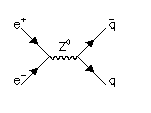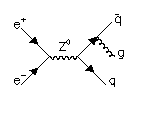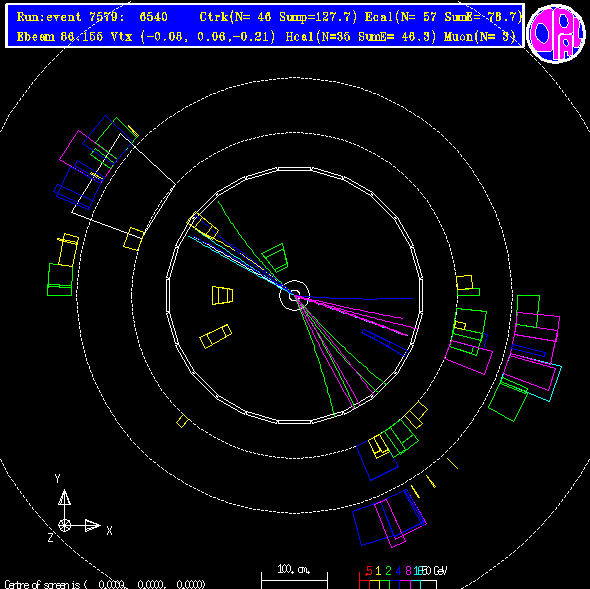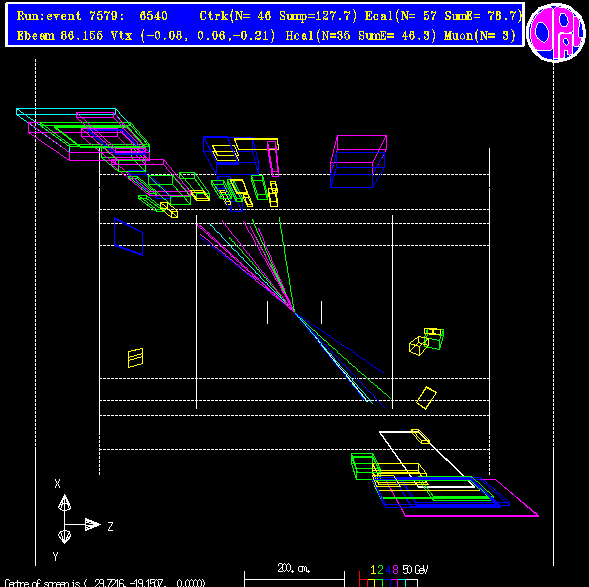High Energy Gluons in Events Containing a Quark-Antiquark Pair
Gluons are the particles responsible for holding the quarks together inside the proton, neutron and other hadrons.
Remember the diagram we used to represent \(e^{+}e^{-} \rightarrow q\bar{q}\) events:

A high energy gluon can be radiated from either the quark or the antiquark as shown in the following diagram:
 .
.
Notice this diagram looks quite similar to that for the radiation of a photon from a quark, which we looked at in the previous section. Unlike a photon we do not observe the gluon directly in our detector. Instead the gluon produces a shower (or "jet") of particles, just like a quark, and it is this jet of particles we observe in our detector.
The presence of a gluon in addition to a quark-antiquark pair produces an event containing three jets: Here is an example event:


If two high energy gluons are radiated then we may see events with four jets: \(e^{+}e^{-} \rightarrow q\bar{q}gg\).
Notice that such events can start to look very much like the \(W^{+}W^{-} \rightarrow q\bar{q}q\bar{q}\) events we looked at in an earlier section! Sometimes it is impossible to say if a particular event belongs to one type or the other.